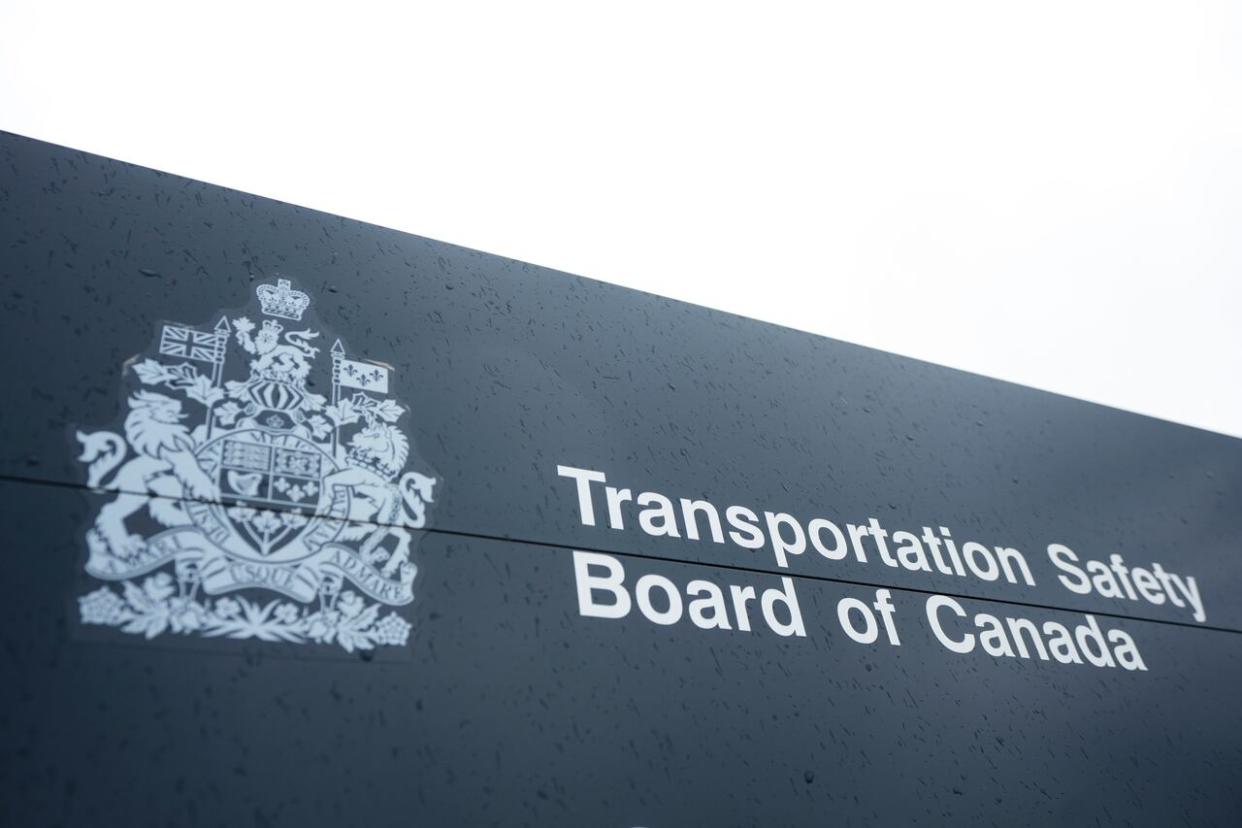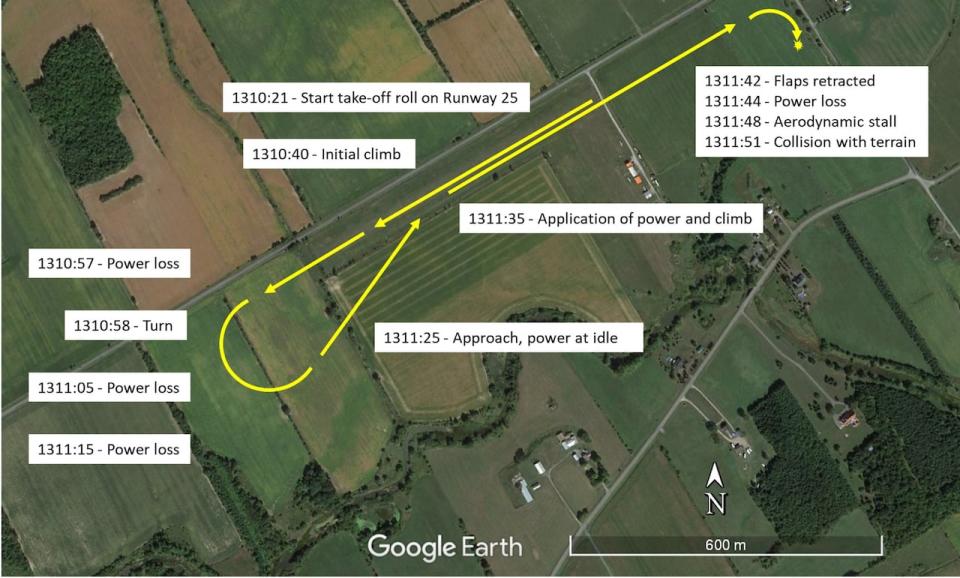Fuelling, emergency turn factors in 2023 fatal plane crash

A fatal plane crash in eastern Ontario last summer happened after a flight instructor and trainee skipped refuelling and tried an emergency turn some agencies caution against, according to the Transportation Safety Board (TSB) of Canada.
Shortly after 1 p.m. on July 26, 2023, Ontario Provincial Police (OPP) officers responded to a plane crash on Power Dam Road east of Alexandria.
One person was pronounced dead at the scene and another suffered life-threatening injuries.
The TSB released its report into the incident on Wednesday.
It said that morning, the flight instructor and second pilot met at Lachute Airport west of Montreal so the trainee could learn about flying a tailwheel airplane, which has a steerable rear wheel that operates along with the rudder.
The pair planned to fuel their Cessna 150B before leaving, but the airport's fuel tank was being filled by a fuel truck so they took off without refuelling.
They flew from Lachute to an airport near Hawkesbury where they practised taking off and landing, took about an hour's break and then set out for the airport near Alexandria.
The following sequence of events that ultimately brought the plane down lasted less than a minute, the TSB said.
3 partial power losses
The TSB said a "momentary partial power loss" occurred around 1:11 p.m., after which the instructor took over control of the plane.
They pulled a 180-degree turn at an altitude of less than 60 metres, during which power was partially lost twice more.
By the time the instructor stabilized the plane to land, there was less than 300 metres of runway left. They tried landing again.
"The instructor pilot began a steep right turn during which the airspeed decreased further and the bank angle increased," the TSB wrote. "The aircraft entered an aerodynamic stall, continued to roll to the right, descended in a steep nose-down attitude, and collided with terrain."
The instructor was killed in the crash, the TSB said.

The TSB diagrammed the sequence of events leading to the crash. (Transportation Safety Board of Canada)
After inspecting the wreckage, the TSB found no signs of malfunction, fuel leak or major mechanical failure. The weather at the time of the crash was seen as suitable despite "very strong winds."
The board does not assign fault as a rule, but concluded with two safety messages for other pilots: one about fuelling and another about proper planning for engine failure during takeoff.
The Canadian Aviation Regulations require aircraft performing such flights during the day have enough fuel to reach their destination, plus enough for 30 extra minutes at normal flight speed.
The TSB said the plane that crashed likely didn't have that amount of fuel.
The board issued reminders that fuel gauges are not always accurate, and said dip sticks can be used to double-check levels. The plane involved had a broken dip stick.
Guidance to glide ahead
The board also cautions against attempting 180-degree turns if an engine fails during takeoff, because of concerns about speed and altitude.
Instead, the U.S. Federal Aviation Administration recommends "pilots should select the best available landing area within an arc of about 60 (degrees) left and right of aircraft heading and resist the temptation to turn back."
Transport Canada's training manual warns that "numerous fatal accidents have resulted from attempting to turn back and land on the runway," and the Cessna owner's manual was updated in 1975 to say pilots should try to glide straight ahead turning to land.
The plane involved was manufactured in 1962.
The TSB considered this a class 4 investigation, meaning there was some public interest but the likelihood of advancing transportation safety was seen as low.


